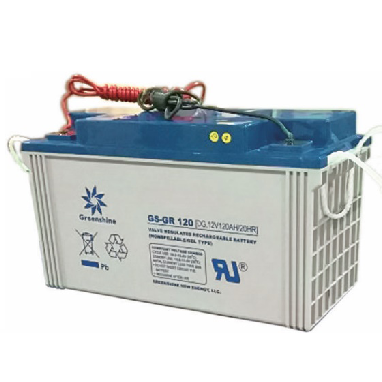WHAT’S THE BEST BATTERY FOR SOLAR STREET LIGHTS?Posted by Stephen Shickadance in Most Popular.
One aspect of switching to solar street lighting that’s always of unease for new solar adopters is the type of battery used to power the light. Many of our customers want to get the best battery for their new solar light that saves money, lasts as long as possible, and requires the least amount of maintenance. With many different technologies on the market, some using confusing language, others that are actually hazardous to human health, it's important to be informed about the proper choice of battery to power your solar light. There are also questions of the physical battery profile, average charging cycles, and overall cost per watt. Some of the tech jargon can get a little confusing, but it’s important to remember all batteries are not created equal, and many batteries on the market actually carry some danger to their operation. Here’s some information below which goes into detail why Greenshine uses some battery technologies over others. We’ve saved the best for last. HERE ARE THE TYPES OF BATTERIES ON THE MARKET FOR SOLAR LIGHTINGNICD NOT A PRIME CHOICE FOR SOLAR LIGHTSNiCd (Nickel Cadmium) batteries are not one of the best solar battery choices on the market for use in solar energy lights. There’s a debate in the “battery community” about what’s called the “memory effect” with NiCd–these kinds of batteries are meant to be charged fully and depleted fully. That isn’t what happens often with batteries meant for solar lights, where there’s a constant charge-discharge with the cycles of day and night. The memory effect alters the battery’s voltage levels to shrink over time, where the battery “forgets” the highs and lows it doesn’t often charge to. Typically, the best battery for solar lights (with a properly-sized system) will discharge about 15% every day. Plus, cadmium is a highly toxic metal which defeats one of the purposes of solar lights–to reduce the environmental impact that the use of energy may have. Many NiCd batteries even have "POISON" stamped across the top. We know most project managers just prefer something that saves money over time, but why not go both routes of cost-effective and environmentally safe? NIMH CLOSER, BUT STILL NO CIGARNiMH (Nickel Metal-Hydride) technology is a better choice over NiCd batteries when it comes to the environment, but there are still some pain points with this selection. There’s a lot of maintenance required with NiMH batteries because they need a full discharge from time to time–we’re sure someone doesn’t want to get the task of discharging every battery in a solar parking lot light configuration. The best application for these batteries are for small electronics like flashlights and toys since they operate best with high energy consumption and demand instead of small, cyclical power drains or low-energy applications. Still not the best battery solution for solar street lights. YOU MIGHT THINK LI-ION BATTERIES ARE BEST, BUT…Think again. Li-Ion (Lithium Ion) batteries, most commonly found in small electronics like cell phones, are actually more dangerous for solar lighting because they need a protection circuit. This circuit limits the peak voltage of the lithium-ion cell while also preventing voltage drops from discharging. We doubt park management would desire large electrical hazards to power their public lights. Plus, there's a shorter lifespan than competing batteries—the best batteries for solar lights typically last 5-7 years, while Li-Ion fail shortly after 3 because they can only recharge about 1,000 times. The battery size required for solar light applications isn’t wallet-friendly! They’re costly to manufacture, which defeats the purpose of solar–not much of a point to switching to inexpensive solar if the battery is expensive. Will all these negative points for Li-Ion batteries, this isn't the best battery for solar street lights. HOW DOES LITHIUM POLYMER FARE?Lithium Polymer batteries are best used in small electronics like their Li-Ion brethren. They’re often mass-produced for cost and are advantageous in small spaces, like the back of a cell phone. However, they have low energy density and a decreased cycle count, prompting more purchases over time. Plus, with a steep price tag for manufacturing, the cost over time to replace batteries doesn’t justify their use for solar. Which leaves us with... What's the Best Battery for Solar Street Lights? A LEAD-ACID DEEP CYCLE GEL BATTERY
Last on our list, the lead-acid battery is actually best for solar! Here’s why: they’re incredibly cheap for their cost-per-watt hours which reduces the price for solar power significantly. Lead-acid is a well-understood, reliable technology that requires very low maintenance. Plus, it has a very low self-discharge rate and it works best with partial discharges, not full ones. Since solar light batteries discharge about 15-20 percent every day-night cycle, they're perfect for keeping longevity while remaining cost-effective. When it comes to solar lighting, a deep-cycle lead-acid battery is the best battery for solar street lights. It’s cost-effective, doesn’t require much maintenance, doesn’t need a full discharge from time to time, and almost has a set-it-and-forget-it technology. They’re the kind of batteries we use in every solar light. It’s just a part of why Greenshine New Energy is proud to be a leader in solar technology. We’ve done the homework; we just need your approval to move forward. Contact us to learn more and see how you can save on money, time, and effort.
Most Popular
|
ArchivesNo Archives Categories
Want More Info? |
LATEST NEWS & ARTICLES

